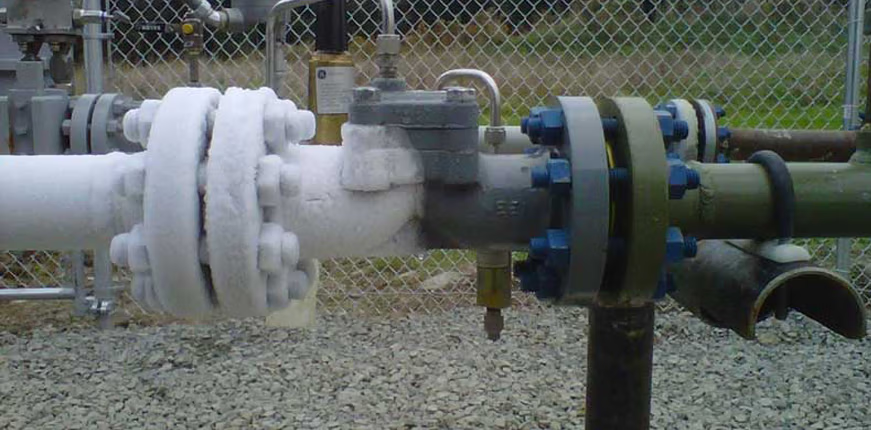The Joule-Thomson Effect, What is it?

The oil and gas industry moves huge amounts of fuel around the U.S. in more than 2.6 million miles of pipelines. Disrupting these movements with frozen valves results in costly scenarios for operators. How do these frozen valves occur? There are various situations where a control valve can freeze over, but one of the most common ones is due to the Joule-Thomson effect.
So what is the Joule-Thomson effect and how do gas pressure, valves, and regulators come into it?
Basics of Gas Pressure in Pipelines
The pressure in gas pipes varies from 1500 psi down to around 200 psi.
The pressure is higher in some places like the wide gathering pipes near the well head, and lower in other places like the smaller pipes that deliver gas to homes. In many cases the pressure will decrease across a control valve or regulator.
Why Are Pressure Changes in the System a Possible Risk?
They’re risky because for every 100 psi drop in pressure, the gas loses 6-8°F in temperature. Physicists James Prescott Joule and William Thomson first described the phenomenon – hence the Joule-Thomson effect.
If the gas pressure drops 800 psi across the control valve or regulator, this will involve a temperature drop between 48⁰ and 64⁰ F. If the gas temperature before it hits the valve is only 60⁰, the temperature after it passes through the valve is approximately 4⁰, which is below the freezing point of water, causing any water vapor within the stream to freeze. And that’s critical.
The Critical Importance of the Joule-Thomson Effect For Oil and Gas
For a clear 90-second explanation, have a look at this video by Kimray.
A slightly longer explanation goes like this. Natural gas has some water remaining in it, even after most is removed. When the gas cools as it passes the valve or regulator, this water content produces a potential freezing issue. And frozen valves mean supply disruption and possible damage.
To counteract this effect you have to protect your valves and regulators from freezing.
You can use insulation to protect your valves, but that can make maintenance difficult. The best way to counteract the Joule-Thomson effect is to install catalytic heaters in enclosures around the valve.
There are several benefits to this solution:
- They’re easy to access for maintenance.
- You can control the heater from a distance – avoiding the need to visit each valve.
- You can monitor the operational status of the equipment to ensure proper functioning.
Using catalytic heater enclosures is a preventative measure that avoids shutdowns in challenging conditions. Contact us to discuss your needs today.
Image © Catco

